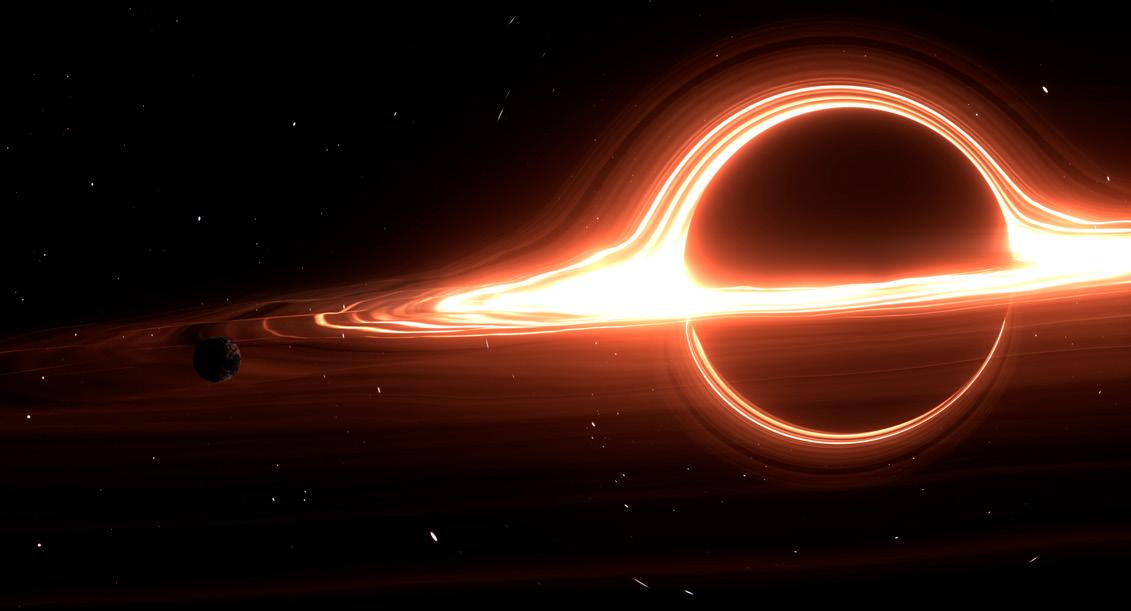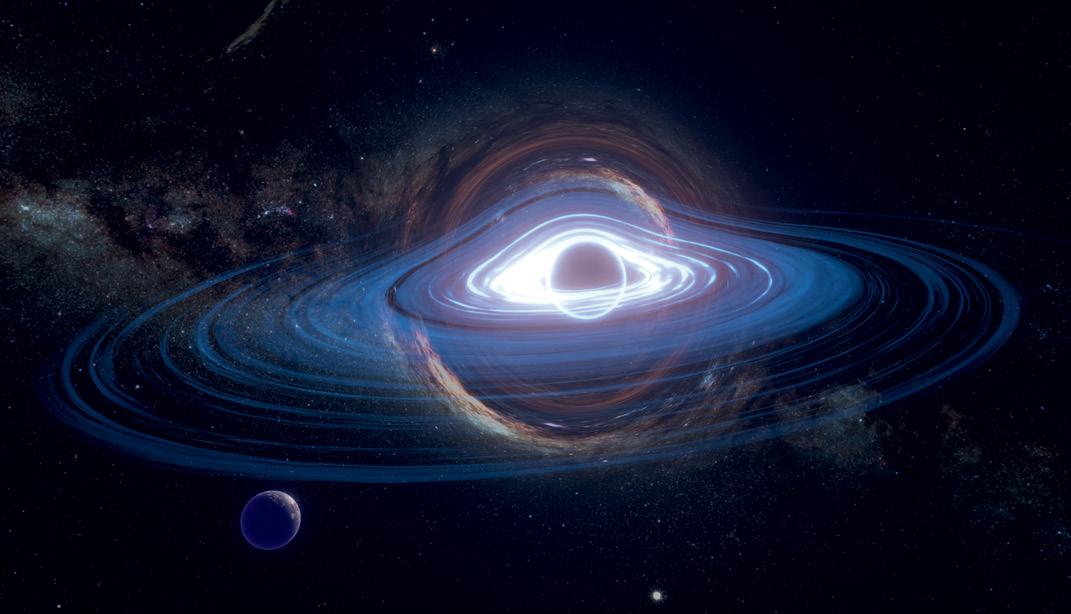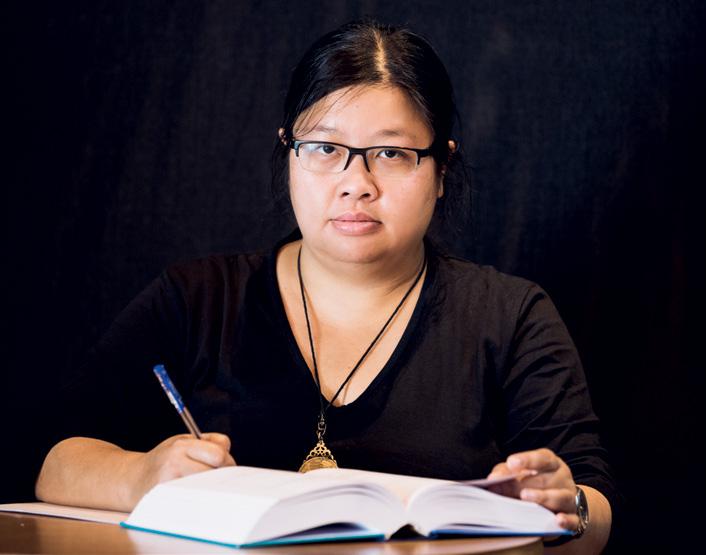
8 minute read
DR. INGYIN ZAW OBSERVING SPACE THROUGH A PARTICLE PHYSICS LENS
Success may often be linked to breadth of experience in one’s field, but sometimes being an outsider can allow for a unique perspective. Dr. Ingyin Zaw, Associate Professor of Physics at New York University Abu Dhabi (NYUAD), embodies that approach.
After gaining her Bachelor’s, Master’s, and PhD in physics, with a focus on particle physics from Harvard University and working as a postdoctorate researcher at the New York University (NYU) Center for Cosmology and Particle Physics, Dr. Zaw made the unusual decision to transition to a new field – astronomy.
Advertisement
“The foundation of what I’ve studied and worked on is a fascination with physics that goes beyond our day-to-day experience and consequently, our intuition, such as relativity and quantum mechanics. That is what enabled and inspired my move from studying the smallest objects – fundamental particles – to the biggest objects – supermassive black holes,” she shared.
What attracted Dr. Zaw to astronomy was the independence it afforded its researchers, compared to particle physics.
“In particle physics, projects are typically huge collaborations, easily involving over 1,000 researchers. Everything you do on a project needs the approval of the entire group, even just presenting at a conference. I liked the independence that was possible in astronomy, where project groups were smaller and more agile,” she said.
Taking advantage of that relative research latitude, for the past nine years, Dr. Zaw has been shaking things up in astronomy by approaching it with a particle physicist’s mind, questioning accepted theories, and proposing new hypotheses. Today, this ‘immigrant of research boundaries’ is ranked fourth in the UAE by h-index in the Scopus listing of researchers in the field of astronomy and physics.
One project that helped Dr. Zaw bridge the gap between particle physics and astronomy took place during her postdoc work at NYU. In that project, she leveraged her knowledge and experience from particle physics to study cosmic rays, which are highly energetic atomic nuclei or other particles traveling through space at a speed approaching that of light. Over the course of the project, she developed an understanding of active galactic nuclei (AGN), which refers to the compact central regions of galaxies that have unusually high luminosity outside of the electromagnetic spectrum of stars. These high luminosity regions contain super-massive black holes that are accumulating material.
A paper on the project, titled “Galaxies correlating with ultra-high energy cosmic rays”, was published in The Astrophysical Journal and is Dr. Zaw’s most-highly cited first-authored paper. It details her research into the potential origin of the most energetic form of cosmic rays, called ultra-high energy cosmic rays (UHECRs). First identified in 1962, UHECRs are perhaps the most energetic particles in the universe and among the rarest. At the time of the paper, the Pierre Auger Observatory in Argentina had only identified 27 instances of arrival energies in the UHECR range in three years of observation. The origin of UHECRs is still unknown, and has proven difficult to pinpoint, as the trajectory of these charged particles is distorted by the magnetic fields that abound in space.
“The Pierre Auger Observatory found that the arrival directions of these cosmic rays – in 20 of these 27 instances of UHECR – statistically correlated with the locations of active galactic nuclei (AGNs) in the Veron-Cetty & Veron (VCV) Catalogue of Quasars and Active AGN, which suggests that those AGN are producing UHECR. We wanted to test this finding by measuring the energy of the supposed source galaxies to see if it was sufficient to accelerate the cosmic rays to the levels we have observed,” the self-professed ‘recovering particle physicist’ said.
Through their research, Dr. Zaw and her collaborators discovered that 14 of the 21 VCV galaxies suggested to be the origins of UHECR were AGNs. They then examined the correlated AGNs’ total luminosity over all wavelengths, called ‘bolometric luminosity'. They found that the bolometric luminosities of most of the AGNS were lower than required to achieve the acceleration observed in UHECRs.
“Our conclusion was somewhat controversial because we discovered that the light that we are able to observe from the VCV galaxies today is not energetic enough to be able to accelerate these UHECR particles to such levels. Either there needs to be a different mechanism for the origin of these UHECR than the standard mechanisms, or those galaxies were more luminous in the past and as their energies have spent the last 100,000 years bouncing around before they reached us, they have since faded,” she explained.
From there, Dr. Zaw went on to study super-massive black holes (SMBHs) using masers, which is an acronym for “microwave amplification by stimulated emission of radiation”. She had initially worked with masers in her undergraduate studies and found her way back to them during her time as a postdoctoral researcher. Astrophysical masers are radio wave emissions from space, which are often used to investigate a variety of astrophysical environments.
“Today, my main research is in trying to figure out how black holes grow, and specifically how material accretes or accumulates onto them via an accretion disk, and I use water-maser emission to study this. Water masers are clouds of water vapor, roughly the size of Earth, that orbit some of the SMBHs. By studying water masers, we can see how they form, and observe their velocities and positions to get accurate measurements of the black hole masses, as well as the shape of the accretion disk. Most methods of measuring the mass of massive black holes are accurate to factors of a few to a few tens. The maser method can give us errors that are down to a few percent in the best systems,” Dr. Zaw explained.

She recently published the first study of a low mass massive black hole using water masers. At present, most of the mass measurements of low mass massive black holes come from single epoch optical spectroscopy, which measures wavelength spectra within optical light emitted by the source at one point. Dr. Zaw and her collaborators sought to provide a more detailed picture of the characteristics of a nearby low mass dwarf galaxy called IC 750, using data from its water maser and other wavelengths.
“Our analysis found that the super-massive black hole in IC 750 was much less massive than expected from the galaxy parameters, specifically the stellar velocity dispersion. The stellar velocity dispersion is the measure of the velocity of the stars in the bulge of the galaxy and is a proxy for the mass of the bulge. When we calculated IC 750 according to these relations, we found it was 10 to 100 times less massive than would be expected given these relations. This was very surprising. Our analysis also placed IC 750 in the category of intermediate-sized black holes, only a few of which have ever been identified,” she explained.
Black holes typically come in two categories – SMBHs that are millions or billions of times the size of the Sun, or the smaller stellar black holes, which can be hundreds of times the size of the Sun. There have been very few black hole systems in between.
“The IC 750 appears to be one of these in-between systems. We need to identify more of these in-between systems to test this further, which is what I am currently working on,” she said.
The curiosity and comfort with being a newcomer, that have characterized Dr. Zaw’s career trajectory as a researcher, may also be why she opted to move to the UAE to work at NYUAD.
“It’s not every day that a new university opens and you get the chance to be part of it growing from the ground up. I wanted to do something new, even though it is always harder than doing something that has already been done,” she said.

“I also thought it would be worthwhile to be part of an American university that people in the Gulf region, particularly women, could find more accessible. I remember that when I chose to go to college in the US, my parents were supportive but my extended family in Myanmar were not convinced,” Dr. Zaw recalled of her experience as a young woman studying abroad.

At NYUAD, Dr. Zaw has enjoyed teaching physics and astronomy to a highly diverse student body representing top students from around the world.
“Teaching is a good balance to research, where you sometimes get stuck on a project and start wondering what good you are to society. As a university teacher, I give my students useful knowledge and skills in critical thinking, programming, and making sense of numbers, which they can transfer to any field. Research is driven in equal parts by asking the right questions and finding the answers. I try to teach my students how to ask interesting questions as well how to answer them,” she said.
Dr. Zaw credits the UAE Government for supporting NYUAD by providing free tuition for its students and for its spacerelated national programs, which have boosted the field.
“Since the announcement of the UAE’s space program and strategy, we’ve seen a big increase in interest from students, particularly Emirati ones. There has also been greater research collaboration and funding. My own low mass black hole project was partially funded by the Mohammed bin Rashid Space Centre,” she said.
With her ongoing research and teaching in astronomy and physics, Dr. Zaw hopes to continue to ask important questions about enigmatic astrophysical phenomena. To which, she will surely continue to propose surprising but sound answers.







